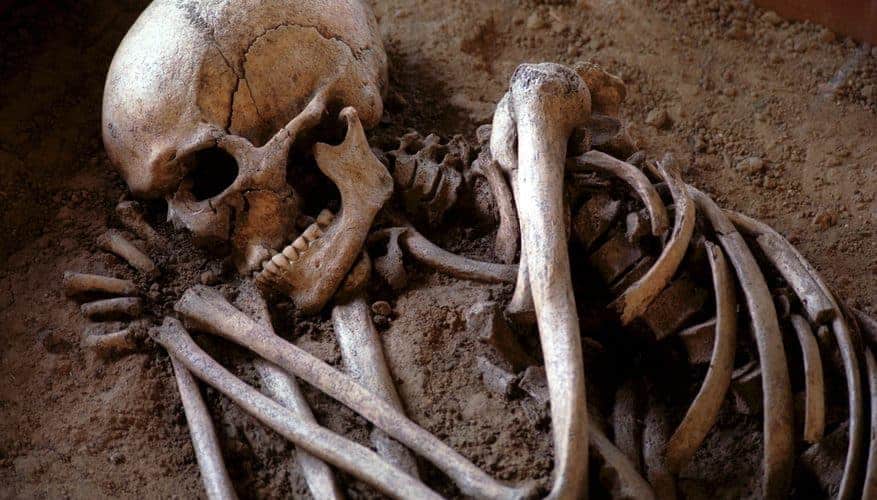Skeletons can reveal their history in a variety of different ways. Some of those stories can be discerned just from looking at them, as the size and shape of bones can reveal if an individual was male or female, young or old. Damage and trauma marks can add to the skeleton’s tale. A skilled osteoarchaeologist can read bones like a book, with even the smallest blemish speaking volumes about past diseases and ailments- or unnatural death. Finally, the way the living interred the body after its demise can also paint a picture; revealing something of a society’s culture- and the individual’s place in it.
However, there are the secrets that can be drawn out only by digging deeper; by extracting isotopes and DNA to find out more about where the individual was born, where they lived, what they ate- even the color of their skin. In this way, bones can tell us something of the life story of the person they once were- and also the story of the times and places in which they lived. We can catch a glimpse of the challenges life threw at them- and the way they died. Here are just ten fantastic tales told not by words or deeds-but by skeletons.

Human Evolution was not exclusive to Africa
Until recently, East Africa was the accepted birthplace of modern humans. Experts dated remains, discovered at Omo Kibish in Ethiopia in the late 1960s to 195,000 years ago. The discovery earned the area the epithet “The Cradle of Civilization.” However, in 2017 two discoveries challenged not only the notion of East Africa but Africa as a whole as the exclusive first home of modern humans.
In the late 2000’s, archaeologists from the Max Planck Institute for Evolutionary Anthropology in Leipzig re-investigated human remains in an abandoned barite mine at Jebel Irhoud, 100KM west of Marrakesh. Over the previous decades, the site had been yielding various archaic bones. During the latest investigation, the team identified twenty different bones from five individuals. Although the teeth of the ancient remains were large and their skulls elongated, their jaws and overall skull shape resembled those of Homo sapiens more than those of any other hominid species. In fact, according to Jean-Jacques Hublin, Director of the Institute, if the Moroccan hominids were alive today, they would not look out of place on a modern street.
The real shock came with the date of the bones. Two separate dating methods revealed they were between 280,000 and 350,000 years old- far older than the Homo Sapiens bones from Omo Kibish. These dates led researchers to conclude that Homo Sapien’s evolution was occurring all over Africa- not just in the east. It was a theory that was supported by the remains of a 2000-year-old boy found in South Africa. Analysis of his genome showed that the boy’s homo sapiens ancestors split from those of other modern African populations 260,000 years ago.
However, it was the reanalysis of the Dali skull from China, which threw a curve ball at the whole out of Africa theory. Archaeologists discovered the remarkably complete skull in the Shaanxi province of China in 1978. At the time, it was not even examined for Homo sapiens features because it dated to 260,000 years ago. However, in light of the Moroccan discoveries, Xinzhi Wu of the Chinese Academy of Sciences in Beijing and Sheela Athreya of Texas A &M University decided to re-examine it. They found that the Dali skull shared features with the Moroccan skulls 10,000km to the west. The two discoveries suggest that evolution was more a process of ” multiregional population connected by migration and genetic exchanges” than an isolated event occurring in one corner of Africa.
The Dali skull is not the only human skeleton to change its story when subjected to closer scrutiny. The oldest human remains in Britain keep on revealing similar surprises.

